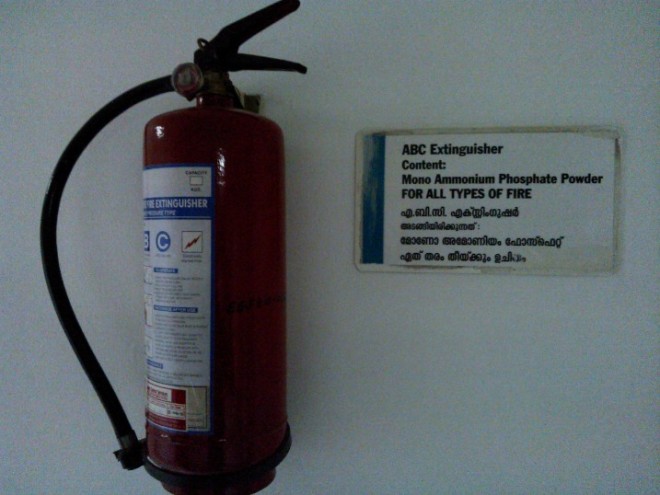Ammonium phosphate fire extinguisher is suitable for Class A, B and C fires.

Class A = Paper, wood or other common combustible materials
Class B = Flammable liquids, paints, or any liquid fire
Class C = Electrical fires
These fire extinguishers are pressurized with non-flammable gas. When there is a fire and we operate the extinguisher the dry chemical power, Ammonium phosphate, will form a thin layer of coating over the burning material thus cut off the oxygen smothering the fire.
Pressurized dry chemical power fire extinguishers are classified under Class 2.2 UN Number 1044 in transport regulations.

Related articles
- Types of Fire Extinguishers (fireextinguishersigns.com)
- How to Use Fire Extinguishers (amyperry80.typepad.com)
